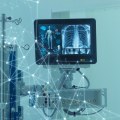Medical imaging has become an essential tool in diagnosing and monitoring a wide range of conditions, but not all imaging methods are created equal in terms of patient safety. Radiation-based tests such as X-rays, CT scans, and nuclear imaging are incredibly useful, yet they come with a well-documented downside—exposure to ionizing radiation, which, when accumulated over time, can increase a patient’s risk of developing certain cancers. As a result, the medical community has increasingly focused on exploring alternatives that provide comparable diagnostic value without the associated radiation risks. These alternatives not only offer safer options for patients requiring multiple imaging sessions but also improve access for populations who may be more vulnerable to radiation, such as children, pregnant women, and individuals with chronic illnesses that necessitate frequent scans.
Magnetic Resonance Imaging (MRI): A Powerful Radiation-Free Tool
Among the most widely accepted alternatives to radiation-based imaging is Magnetic Resonance Imaging (MRI). MRIs use strong magnetic fields and radio waves to create detailed images of organs, tissues, and the skeletal system. Unlike X-rays or CT scans, MRIs do not expose the patient to radiation, making them ideal for repeated use and for patients who are particularly sensitive to radiation’s effects. MRIs are especially effective in evaluating soft tissues such as the brain, spinal cord, muscles, and joints. However, while they are incredibly valuable, MRIs are also more expensive, can take longer to complete, and may be challenging for patients with claustrophobia or metal implants. Despite these limitations, the absence of ionizing radiation makes MRI one of the most recommended alternatives when safety is a concern.
Ultrasound Imaging: Sound Waves for Safer Scanning
Ultrasound imaging is another key alternative that avoids radiation entirely. It utilizes high-frequency sound waves to generate real-time images of internal organs and blood flow. Most commonly associated with monitoring pregnancies, ultrasounds are also used in cardiac, abdominal, and musculoskeletal evaluations. Portable, relatively affordable, and non-invasive, ultrasound technology has become increasingly sophisticated, enabling more detailed images and broader diagnostic applications. Its widespread use in emergency rooms and outpatient clinics underscores its value as a fast, safe, and effective imaging option—especially in scenarios where radiation should be avoided. However, its image resolution is lower than that of CT or MRI scans, and its effectiveness can be limited by patient body size or the depth of the target structure.
Thermography and Optical Imaging: Niche Yet Promising
Emerging technologies such as thermography and optical imaging represent innovative efforts to move further away from radiation-based diagnostics. Thermography captures infrared images that display heat patterns and blood flow in body tissues. Although primarily used in detecting inflammation or breast abnormalities, it remains controversial due to inconsistent sensitivity and specificity. Meanwhile, optical imaging uses near-infrared light to observe metabolic changes and blood oxygenation in tissues, providing functional insights rather than structural details. While not yet mainstream, these technologies are gaining ground in specialized areas of research and may offer additional radiation-free options in the future as accuracy and resolution improve.
Limitations and the Role of Clinical Judgement
Despite the advantages of non-radiation imaging, these alternatives are not always appropriate for every condition. Some diagnostic needs—like detecting fractures, evaluating lung structures, or visualizing certain cancers—may still require the precision and depth provided by CT scans or X-rays. This is where clinical judgment plays a critical role. Physicians must carefully weigh the benefits of information gained against the potential risks of radiation, especially when alternatives are available. In some cases, combining non-radiation imaging methods with traditional approaches allows for reduced exposure without compromising diagnostic value. Shared decision-making between doctors and patients ensures that imaging strategies align with both clinical needs and patient preferences.
Accessibility and Patient Considerations
As with all healthcare services, accessibility plays a crucial role in how effectively these alternatives can be implemented. Not all facilities offer advanced MRI or ultrasound machines, and long wait times can delay diagnosis. Additionally, patients with mobility issues may find it difficult to travel to specialized centers offering these alternatives. Addressing these challenges involves integrating assistive transportation for the mobility-impaired to ensure that everyone, regardless of physical ability, can reach and benefit from safer diagnostic options. Expanding mobile imaging units and investing in community-based imaging centers can also help close the gap for rural and underserved populations.
Conclusion: Advancing Safety in Medical Diagnostics
The medical field is steadily moving toward safer, more patient-friendly diagnostic tools, with MRI, ultrasound, and emerging light-based technologies at the forefront of this evolution. While radiation-based tests still play a crucial role in specific clinical contexts, the growing availability and refinement of radiation-free alternatives offer promising paths for reducing patient risk without sacrificing diagnostic clarity. As innovation continues, and as healthcare providers become more aware of the cumulative impact of radiation exposure, the integration of safer imaging methods will become an expected standard of care—fostering a future where accurate diagnosis goes hand in hand with patient safety and accessibility.






